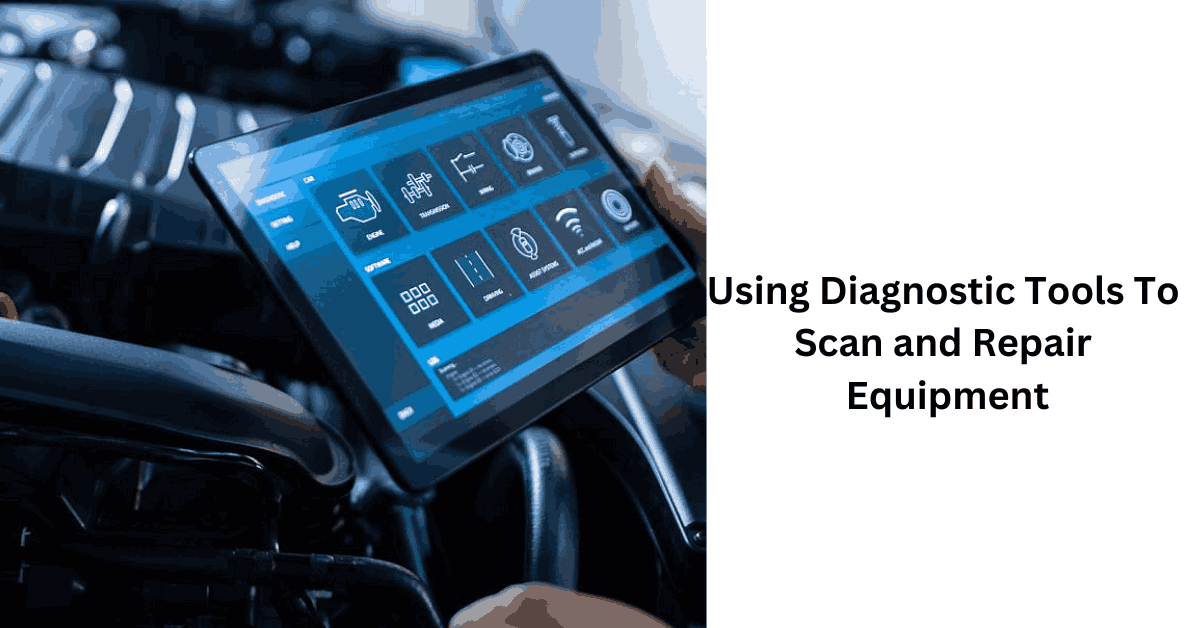Diagnostics tools identify and analyze problems such as performance issues, malfunctions, and failures in the mechanical equipment.
Heavy duty equipment diagnostics tools help maintain industrial machinery’s performance and efficiency through the early detection and repair of faulty components.
Scanning and repairing the equipment enhances safety, minimizes downtime, and saves the cost of component replacement. Prompt repairs also play a crucial role in Prolonging your workshop equipment, ensuring it remains functional and reliable over time. Here is when to use diagnostic tools to scan and repair equipment:
Table of Contents
Check that the Engine Light is On
When the check engine light is on, it can indicate various issues, such as engine misfires, faulty oxygen sensors, or a loose gas cap. Heavy duty equipment diagnostics tools use onboard diagnostic systems to retrieve fault codes from the vehicle’s computer.
These codes provide information about the specific issue and help identify the necessary repairs. The little light represents a different problem with the engine, transmission, or exhaust systems.
Unusual Noises or Vibrations
Grinding noise could signal worn-out brake pads, while squealing could indicate loose belts or pulleys. Issues with the suspension system or engine cause unusual vibrations in the vehicle or equipment.
The vibration of the equipment can also be caused by an imbalance in the rotating parts, such as a bent drive shaft or misaligned gears. Diagnostic tools offer real-time data like RPM, oil pressure, and temperature readings for diagnosing unusual noises.
Poor Performance or Decreased Efficiency
Heavy duty equipment diagnostics tools are also helpful when the performance of the vehicle or equipment could improve. This could mean decreased power, energy efficiency, or performance.
Technicians scan emissions levels, fuel efficiency, and other indicators by connecting diagnostic tools to the vehicle’s computer system. Diagnostic tools such as coolant management system analyzers can also help identify leaks or clogs in the vehicle’s cooling system.
How to Effectively Use Diagnostic Tools for Scan and Analysis
Getting the most out of diagnostic tools requires proper training and understanding of the vehicle’s systems. Check for updates or software upgrades before performing a diagnosis.
Provide accurate readings for analysis, confirm the diagnostic tools are properly calibrated, and always follow safety protocols. Here is a step-by-step guide on how to use diagnostic tools for scan and analysis:
Prepare the Vehicle
The vehicle must be on a level surface, and the engine should be turned off during a diagnostic scan. Switch off all accessories, such as radios, air conditioning, and lights, to avoid interference.
Confirm that the diagnostic tool is compatible with the vehicle’s make and model. Refer to the vehicle’s manual to locate the diagnostic port, usually under the steering wheel.
Connect the Diagnostic Tool
Scanning tools come with different adapters to connect to the diagnostic port. Correctly attach the adapter to the OBD-II port and connect it to the diagnostic tool. Verify that the connection is secure before powering on the diagnostic tool. Some diagnostic tools, such as code readers, may have a battery, while others require power from the vehicle.
Run the Scan
Follow the instructions provided by the diagnostic tool to start the scan. Some devices require inputting the vehicle’s identification number or VIN before the scan. The scan can take a few minutes to complete as it checks for error codes and runs through various systems.
Power On and Access Codes
Power on the diagnostic tool and wait for it to boot up. Choose the scan or diagnosis function from the menu. The device will prompt for a code, which can be found in the vehicle’s manual. Enter it when required, and allow time for data to load into the scanner.
Analyze the Results
The scan will report any error codes or issues detected in the vehicle’s systems. Review each code and its corresponding description to determine the issue. Some diagnostic tools also provide possible solutions or recommendations for addressing the problem. The technician can accurately diagnose and repair the vehicle based on the codes.
Invest in Reliable Heavy Duty Equipment Diagnostics
Diagnostic tools allow for quicker and more accurate diagnosis of issues, leading to faster resolutions and reduced downtime for the vehicle. These tools’ enhanced functionality and features provide technicians with detailed information about the vehicle’s systems. Heavy Duty equipment diagnostics reduce the need for trial-and-error repairs, saving time and resources. Contact a reliable supplier to purchase high-quality diagnostic tools for your fleet or workshop.
